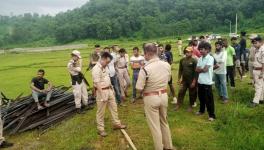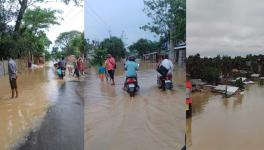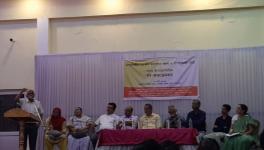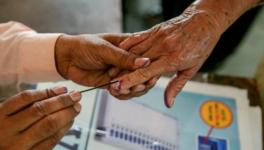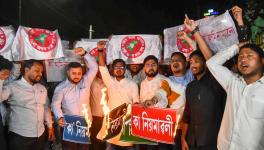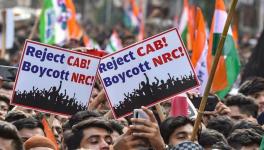The Protests in Dima Hasao are Just the Tip of the Iceberg
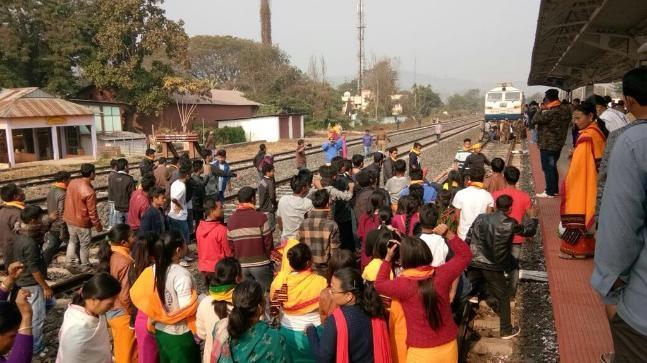
Image Courtesy: India Today
On January 25, the Assam Police opened fire at the Maibang Railway Station, injuring eight and killing two. On January 26, while the rest of the country raised the tricolour, black flags were raised across Dima Hasao in protest against the police action. The two who were killed in the firing have been identified as Mithunjay Dibragede and Prabin Hakmaosa. Dibragede was shot in the chest close to his clavicle, while Hakmaosa was shot in the head. They both died in the hospital at Lumding and GNRC respectively. The people of Dima Hasao observed a 48-hour shutdown from 5 am on January 26 till 5 am on January 28. ULFA, under Anup Chetia, led a fact-finding mission in Dima Hasao and has demanded that an independent Judicial inquiry be conducted in the firing. The Assam Police, as a result of the tension, has taken the issue very seriously and have been instructed to ‘check rumour-mongering’ in the districts bordering Nagaland.
According to the police, the firing was provoked when the protesters started pelting stones on the police personnel when they tried to disperse them. The protesters were protesting against the alleged inclusion of Dima Hasao within ‘Nagalim’ as a part of the framework agreement between the Government of India and the NSCN(IM). There have been allegations that the present crisis emerged after The Wire published the ‘draft agreement’ as prepared by Jagdamba Mall. However, as Arunabh Saikia pointed out, the tension existed before The Wire story. The district of the North Cachar Hills was renamed Dima Hasao in 2010. Dima Hasao literally means the Dimasa Hills in the Dimasa language. The Dimasa people have a long history prior to the Ahoms and the British, in the Dimasa Kingdom. The Dimasa Kingdom was a Cachari Kingdom that included the present-day town of Dimapur, which is now in Nagaland, as well as parts of Assam and Tripura.
During the late 1980s, a militant group was launched by a section of the Dimasas called the Dimasa National Security Force. The group formally surrendered en masse in 1994. This led to the formation of the Dima Halam Daogah led by Jewel Garlossa. The DHD later split into two factions one led by Pranab Nunisa, and the other led by Jewel Garlossa. The DHD is at present defunct. However, the aims of the various Dimasa militant groups has remained the establishment of a ‘Dimaraji’ state. Dimaraji, as envisioned by the Dimasa militant groups, consists of the Dima Hasao district as well as parts of Eastern Karbi Anglong, most of Cachar and Karimganj, as well as parts of Dimapur district in Nagaland including Dimapur town.
It is therefore not inconceivable that proposing the setting up Naga Autonomous District Councils in Dima Hasao will be met with stiff opposition, let alone putting Dima Hasao under ‘Nagalim’. For as long as the details of the Framework Agreement remain hidden, tensions among communities that share a border with Nagaland will persist. Assam has six districts which border Nagaland; Charaideo, Dima Hasao, Golaghat, Jorhat, Karbi Anglong, and Sivasagar. Dima Hasao may only be the beginning. The Union Government has stated that the details of the Framework Agreement cannot be divulged as doing so will be prejudicial to ‘national security’. However, vague assurances that the territorial integrity of the states bordering Nagaland will not help in pacifying the speculation either. Jagdamba Mall’s proposed draft had the effect of confirming the apprehensions of the Dimasas. Militant groups like the DHD and the Karbi Longri N.C. Hills Liberation Front could re-emerge if the conditions for their revival are created. The future of tensions along the border will depend entirely on how the Union Government plays its cards.
Get the latest reports & analysis with people's perspective on Protests, movements & deep analytical videos, discussions of the current affairs in your Telegram app. Subscribe to NewsClick's Telegram channel & get Real-Time updates on stories, as they get published on our website.










